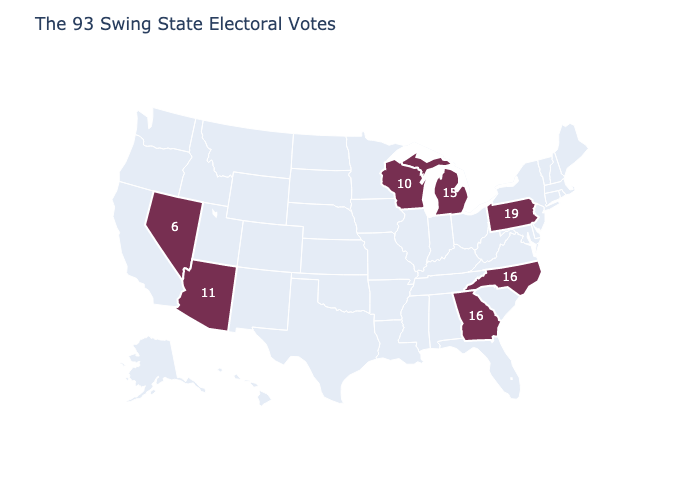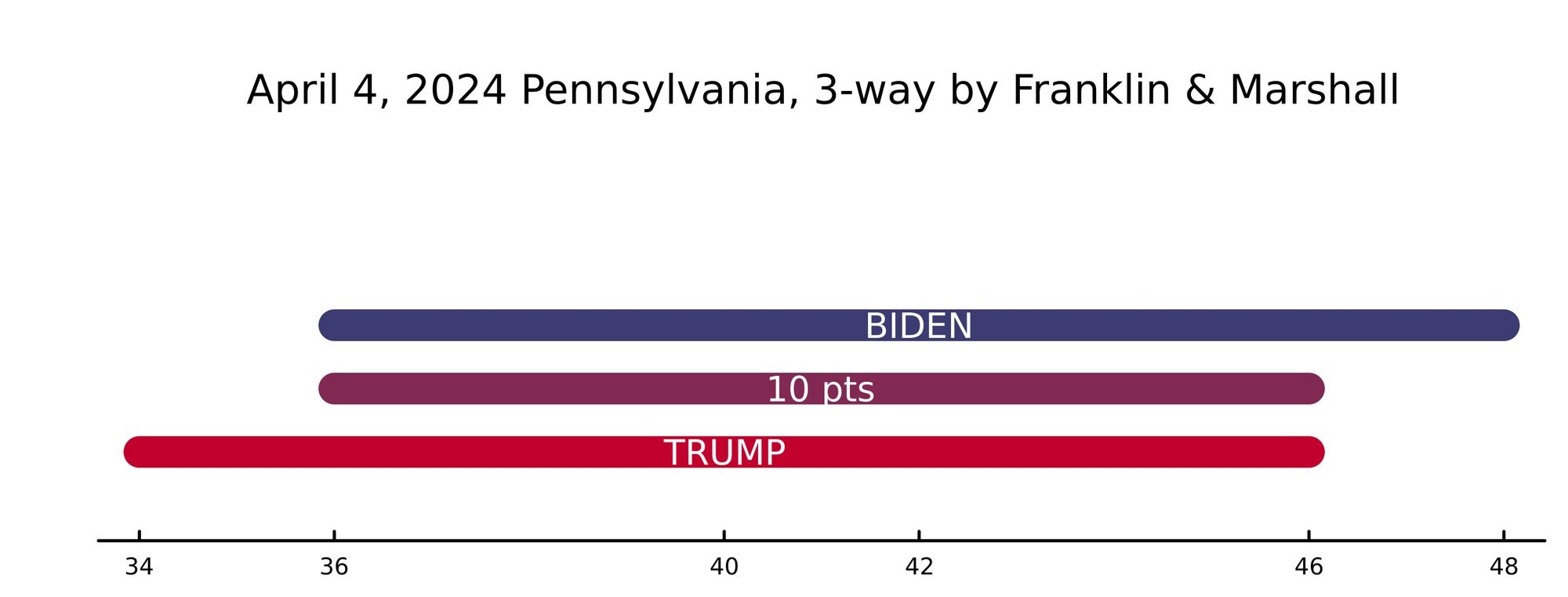Table of Contents
Introducing Swing Watch

Most days, some new presidential preference poll drops and you are plunged into hope or despair because it looks better or worse than you expected. It's a whiplash. In the words of Carly Simon
We can never know about the days to come
But we think about them anyway. (Anticipation)
Why it's so hard to climb down off that tree
We're of two brains. Not minds, brains. Oversimplifying, there's the prefrontal cortext and the rest.

Robert Sapolsky can tell you a lot about the PFC, how it's where decisions are arrived at, but not independently of the rest of the brain, and its connections to the seats of emotion. See his recent book Determined. The late Daniel Kahneman can tell you how the PFC and the amygdala divvy up the work of processing the world around you. (With Amos Terksey, he is the only psychologist to win the Nobel Prize in Economics.) His popular treatment of his work on how we process the world with a fast system adapted to ready response work and a slow system that works the problem like Apollo 13 Mission Control.
Humans are amazing dealing with tons of complexity, but it requires deep focus and effort.
We think we have a good handle on the political scene if we are junkies. We inhale the news from all corners. A lot of time. Some of us are West Wing Josh Lymans or Will Bailey political operatives who can spit out polling on any of the 428 Congressional Districts on demand. But, mostly, we don't sit down to put cursor to spreadsheet and work the numbers. Sometimes, even with just school arithmetic (+-*/) to numbers get just too big. For example, there are 56 electoral states and districts. They can be combined 7,648,690,600,760,440 different ways. (That's seven quadrillion, a number too big to compare to anything IRL.)
Data science to the rescue—sort of
Dealing with the numbers isn't the challenge it used to be. A home computer can sift through the possibilities faster than anything so relatively inexpensive has any right to. That's not the hard part.
The hard part is deciding what to compute and how to understand the result.
Introducting Swing Watch
Now available for preview, my new project lays down a starting point for assimilating polling data. There is not yet an https certificate. Although I have put nothing nefarious on the site, which is hosted on Amazon and it's very unlikely someone has gone to the trouble to meddle with a "man in the middle attack," you may want to wait to visit until later in the week.
What's on offer
Zilch. Nada, Nicht. Zero. Nothing. Totally non-commercial. No ads, clickbait, affiliate links. No subscriptions until the traffic grows to a point that the hosting costs begin putting a dent in my budget fender.
What's to see
- A collection of presidential preference poll results for the seven states that matter
- Pennsylvania (19 votes, down 1 from 2020)
- Georgia (16 votes)
- North Carolina (16 votes, up 1 from 2020)
- Michigan (15 votes, down 1 from 2020)
- Arizona (11 votes)
- Wisconsin (10 votes)
- Nevada (6 votes)
- A standardized display of margin of error on a common basis

- A model that integrates the results of the last election with the polling to assess the current likelihood of a Biden win, loss or draw.
- Election news from the swing states.
Initial take
Based on selected March polls
| Outcome | Likelihood |
|---|---|
| Bidin win | 56.1% |
| Trump win | 46.8% |
| Electoral tie | — |
What to do with that information
Cheer or jeer. Take it into account in adding your own observations on how to discount or markup. Until 90 days out polls have a poor track record of prediction. This is merely meant as a starting point and calming draught.

Design for a new flag. Service mark of Swing Watch.







